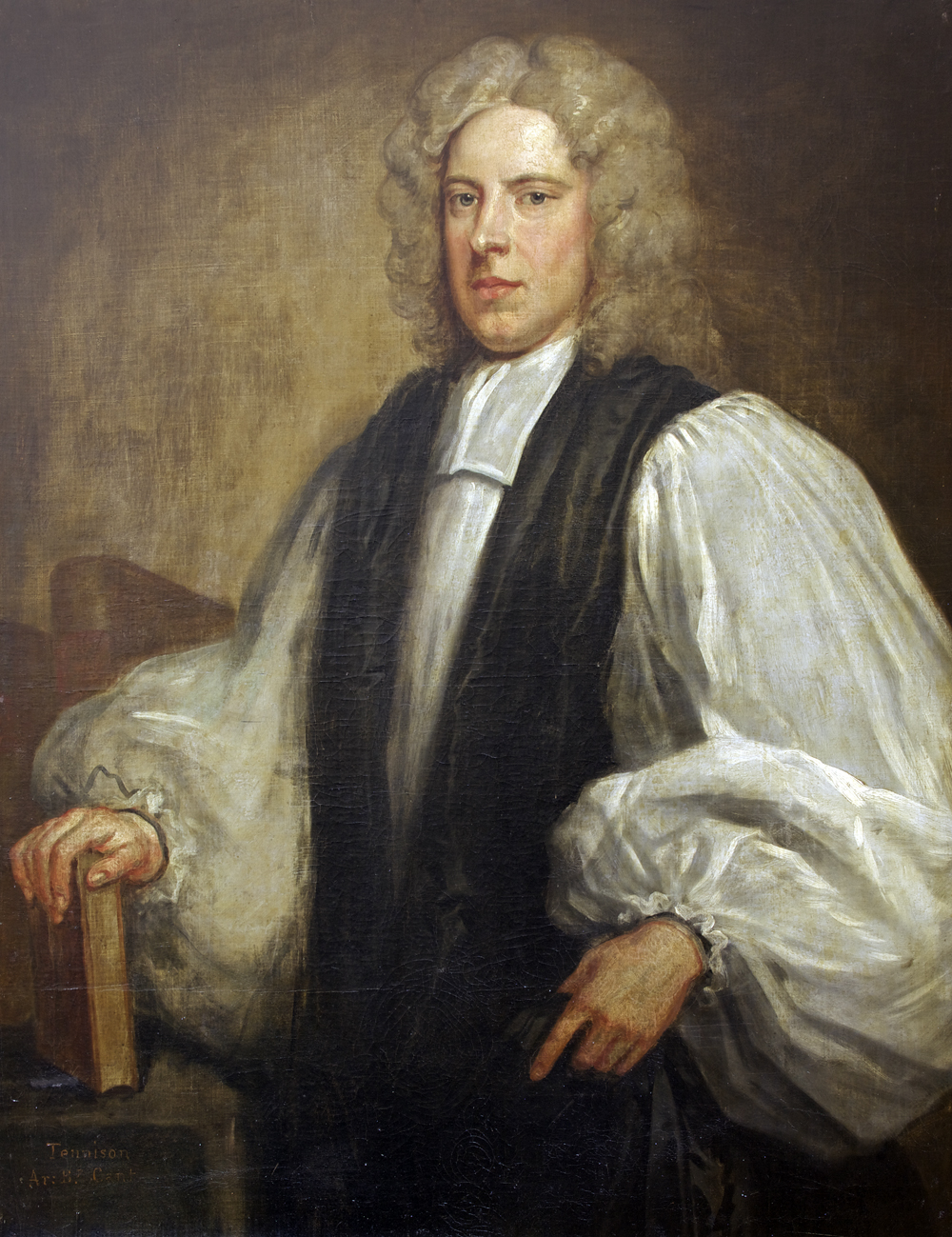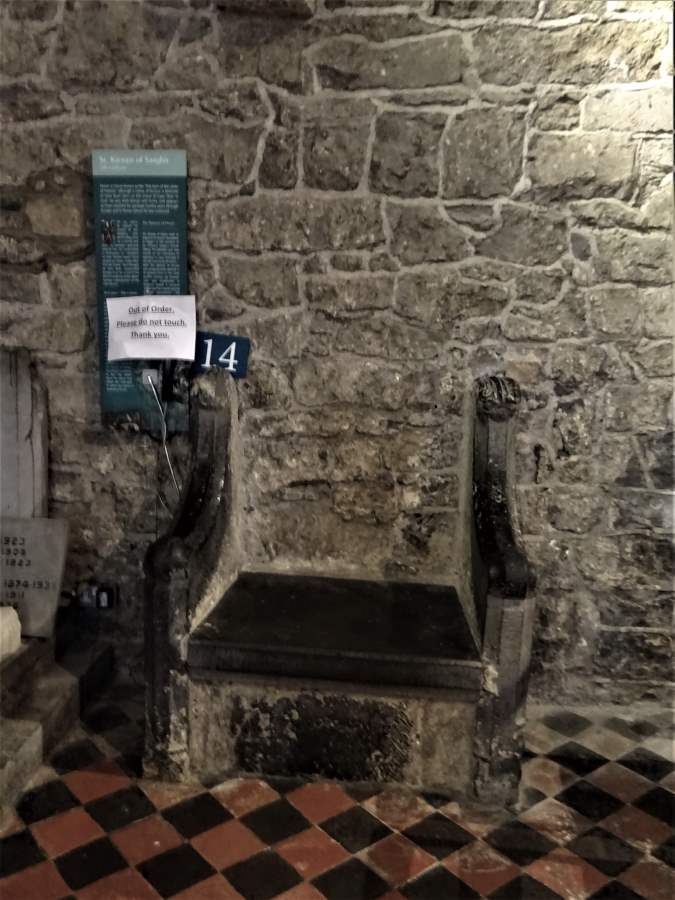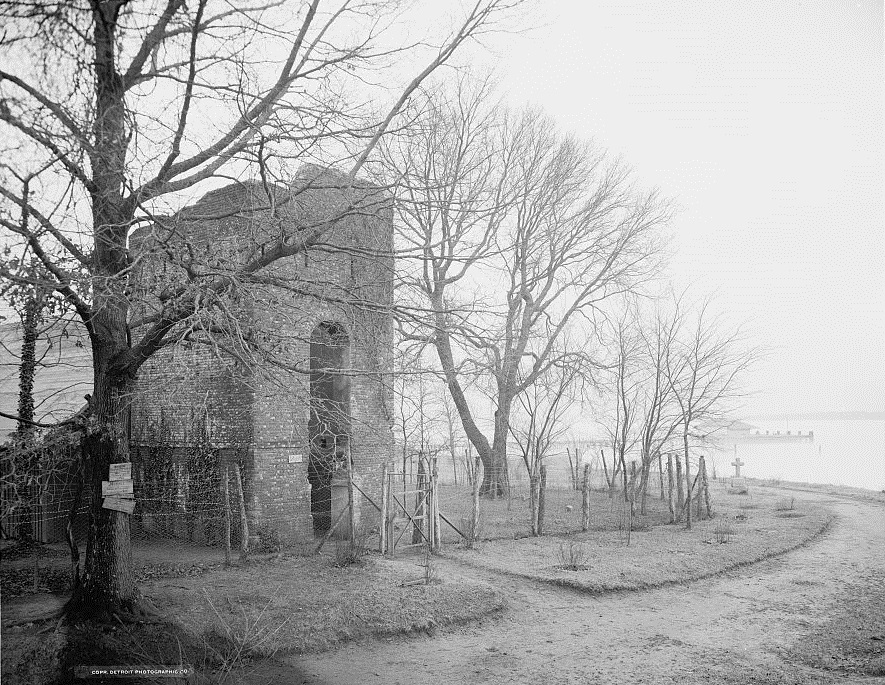|
Edward Tenison
Edward Tenison (1673–1735) was an English bishop of Ossory. An example of the workings of the system of patronage in the Church of England, Tenison also was a significant Whig and controversialist. Early life Baptised at Norwich on 3 April 1673, he was the only surviving child of Joseph Tenison of Norwich by his wife Margaret, daughter of Edward Mileham of Burlingham in Norfolk. Philip Tenison, archdeacon of Norfolk, was his grandfather and Thomas Tenison, Archbishop of Canterbury, a cousin. Thomas Browne who had married another daughter of Mileham was therefore an uncle, and Tenison was in later life on good terms with his daughter Elizabeth Lyttelton, the writer. After being educated at St Paul's School, London under Thomas Gale, he was admitted a scholar of Corpus Christi College, Cambridge, on 19 February 1691. He graduated B.A. in 1694, and proceeded LL.B. in 1697 and D.D. in 1731, the last two being Lambeth degrees. Tenison was at first intended for law, and was boun ... [...More Info...] [...Related Items...] OR: [Wikipedia] [Google] [Baidu] |
Bishop Of Ossory
The Bishop of Ossory () is an Episcopal polity, episcopal title which takes its name after the ancient of Kingdom of Ossory in the Provinces of Ireland, Province of Leinster, Republic of Ireland, Ireland. In the Roman Catholic Church it remains a separate title, but in the Church of Ireland it has been united with other bishoprics. History The diocese of Ossory was one of the twenty-four dioceses established at the Synod of Rathbreasail in 1111 and coincided with the ancient Kingdom of Ossory (Osraige); this is unusual, as Christian dioceses are almost always named for cities, not for regions. The episcopal see has always been in Kilkenny, the capital of Ossory at the time of the Synod of Rathbreasail. The erroneous belief that the cathedral was originally further north at Aghaboe is traced by John Bradley to a 16th-century misinterpretation of a 13th-century property transfer, combined with the fact that the abbey at the site which became St Canice's Cathedral, Kilkenny, was ... [...More Info...] [...Related Items...] OR: [Wikipedia] [Google] [Baidu] |
Diocese Of Rochester
The Diocese of Rochester is a Church of England diocese in the English county of Kent and the Province of Canterbury. The cathedral church of the diocese is Rochester Cathedral in the former city of Rochester. The bishop's Latin episcopal signature is: " (firstname) Roffen", ''Roffensis'' being the genitive case of the Latin name of the see. An ancient diocese, it was established with the authority of King Æthelberht of Kent by Augustine of Canterbury in 604 at the same time as the see of London. Only the adjacent Diocese of Canterbury is older in England. Its establishment was the first part of an unrealised plan conceived by Pope Gregory the Great for Augustine of Canterbury to consecrate 12 bishops in different places and another 12 for the prospective see (later province) of York. The Rochester diocese includes 268 parish churches throughout: * the western part of the county of Kent *the London Borough of Bexley *the London Borough of Bromley; The diocese is subdivide ... [...More Info...] [...Related Items...] OR: [Wikipedia] [Google] [Baidu] |
John James (architect)
John James (c. 1673 – 15 May 1746) was a British architect particularly associated with Twickenham in west London, where he rebuilt St Mary's Church and also built a house for James Johnson, Secretary of State for Scotland, later Orleans House and since demolished. Howard Colvin's assessment of him was that of "a competent architect, but he lacked inventive fancy, and his buildings are for the most part plain and unadventurous in design". Life The son of a Hampshire parson also named John James, he attended the Holy Ghost School, Basingstoke, of which his father was headmaster. He was then apprenticed in 1690 to Matthew Banckes, Master Carpenter to the Crown 1683–1706, whose niece he married, and he lived for a while at Hampton Court Palace. He was employed at Greenwich, where in 1718 he became joint Clerk of the Works with Hawksmoor, whom he succeeded as Surveyor of the Fabric of Westminster Abbey, where he completed Hawksmoor's west tower. In the interim he was appoin ... [...More Info...] [...Related Items...] OR: [Wikipedia] [Google] [Baidu] |
William Wake
William Wake (26 January 165724 January 1737) was a priest in the Church of England and Archbishop of Canterbury from 1716 until his death in 1737. Life Wake was born in Blandford Forum, Dorset, and educated at Christ Church, Oxford. He took orders, and in 1682 went to Paris as chaplain to the ambassador Richard Graham, Viscount Preston (1648–1695). Here he became acquainted with many of the savants of the capital, and was much interested in French clerical affairs. He also collated some Paris manuscripts of the ''Greek New Testament'' for John Fell, bishop of Oxford. He returned to England in 1685; in 1688 he became preacher at Gray's Inn, and in 1689 he received a canonry of Christ Church, Oxford. In 1693 he was appointed rector of St James's Church, Piccadilly. Ten years later he became Dean of Exeter, and in 1705 he was consecrated bishop of Lincoln. He was translated to the see of Canterbury in 1716 on the death of Thomas Tenison. Tenison had been his mentor, and was ... [...More Info...] [...Related Items...] OR: [Wikipedia] [Google] [Baidu] |
Dilapidations
Dilapidation is a term meaning a destructive event to a building, but more particularly used in the plural in English law for # the waste committed by the incumbent of an ecclesiastical living # the disrepair for which a tenant is usually liable when he has agreed to give up his premises in good repair. Dilapidation is derived from the Latin for scattering the stones () of a building. Ecclesiastical law In general English law a tenant for life has no power to cut down timber, destroy buildings, etc., or to let buildings fall into disrepair (see Waste). In the eye of the law an incumbent of a living is a tenant for life of his benefice, and any waste, voluntary or permissive, on his part must be made good by his administrators to his successor in office. The principles on which such dilapidations are to be ascertained, and the application of the money payable in respect thereof, depend partly on old ecclesiastical law and partly on acts of Parliament. Questions as to eccl ... [...More Info...] [...Related Items...] OR: [Wikipedia] [Google] [Baidu] |
South Sea Company
The South Sea Company (officially The Governor and Company of the merchants of Great Britain, trading to the South Seas and other parts of America, and for the encouragement of the Fishery) was a British joint-stock company founded in January 1711, created as a public-private partnership to consolidate and reduce the cost of the national debt. To generate income, in 1713 the company was granted a monopoly (the Asiento de Negros) to supply African slaves to the islands in the "South Seas" and South America. When the company was created, Britain was involved in the War of the Spanish Succession and Spain and Portugal controlled most of South America. There was thus no realistic prospect that trade would take place, and as it turned out, the Company never realised any significant profit from its monopoly. However, Company stock rose greatly in value as it expanded its operations dealing in government debt, and peaked in 1720 before suddenly collapsing to little above its ... [...More Info...] [...Related Items...] OR: [Wikipedia] [Google] [Baidu] |
George I Of Great Britain
George I (George Louis; ; 28 May 1660 – 11 June 1727) was King of Great Britain and Ireland from 1 August 1714 and ruler of the Electorate of Hanover within the Holy Roman Empire from 23 January 1698 until his death in 1727. He was the first British monarch of the House of Hanover as the most senior Protestant descendant of his great-grandfather James VI and I. Born in Hanover to Ernest Augustus and Sophia of Hanover, George inherited the titles and lands of the Duchy of Brunswick-Lüneburg from his father and uncles. A succession of European wars expanded his German domains during his lifetime; he was ratified as prince-elector of Hanover in 1708. After the deaths in 1714 of his mother Sophia and his second cousin Anne, Queen of Great Britain, George ascended the British throne as Anne's closest living Protestant relative under the Act of Settlement 1701. Jacobites attempted, but failed, to depose George and replace him with James Francis Edward Stuart, Anne's Catholi ... [...More Info...] [...Related Items...] OR: [Wikipedia] [Google] [Baidu] |
George II Of Great Britain
, house = Hanover , religion = Protestant , father = George I of Great Britain , mother = Sophia Dorothea of Celle , birth_date = 30 October / 9 November 1683 , birth_place = Herrenhausen Palace,Cannon. or Leine Palace, Hanover , death_date = , death_place = Kensington Palace, London, England , burial_date = 11 November 1760 , burial_place = Westminster Abbey, London , signature = Firma del Rey George II.svg , signature_alt = George's signature in cursive George II (George Augustus; german: link=no, Georg August; 30 October / 9 November 1683 – 25 October 1760) was King of Great Britain and Ireland, Duke of Brunswick-Lüneburg (Hanover) and a prince-elector of the Holy Roman Empire from 11 June 1727 ( O.S.) until his death in 1760. Born and brought up in northern Germany, George is the most recent British monarch born outside Great Britain. The Act of Settlement 1701 and the Acts of Union 1707 positioned his grandmother, ... [...More Info...] [...Related Items...] OR: [Wikipedia] [Google] [Baidu] |
Earls Of Dorset
Earl of Dorset is a title that has been created at least four times in the Peerage of England. Some of its holders have at various times also held the rank of marquess and, from 1720, duke. A possible first creation is not well documented. About 1070 Osmund, or Osmer, is said to have been created earl of Dorset, but the authority is a very late one and Osmund described himself simply as bishop. William de Mohun appears as earl of Dorset or Somerset, these two shires being in early times united under a single sheriff. It was later created in 1411 for Thomas Beaufort, who was later created Duke of Exeter. The peerages became extinct on his death. It was next created in 1441 for Edmund Beaufort who was later created first Marquess of Dorset (1442) and then Duke of Somerset (1446). These titles were forfeited by the second duke in 1464. The last creation was in 1604 for Thomas Sackville, 1st Baron Buckhurst. In 1720 the seventh earl was created Duke of Dorset in the Peerage of Gr ... [...More Info...] [...Related Items...] OR: [Wikipedia] [Google] [Baidu] |
David Polhill
David Polhill (1674 – 15 January 1754), of Chipstead, Kent, was an English landowner and Whig politician who sat in the House of Commons at various times between 1710 and 1754. He was one of the signatories of the Kentish petition in 1701. Early life Polhill was the second son of Thomas Polhill of Otford, Kent and his wife Elizabeth Ireton, daughter of Henry Ireton, and granddaughter of Oliver Cromwell. Polhill's elder brother died, leaving him in possession of his father's inheritance. In December 1692, he was given a licence to travel to Holland which became the start of an extended Grand Tour. He visited Hanover, Brunswick, Zell, Austria, Geneva and Italy where he was at Padua University in 1694. He returned to England in the autumn of 1696. Career Polhill was added to the Kentish lieutenancy on 30 July 1697, and also became a Freeman of Dover in 1697. He was appointed to the Commission of the Peace (J.P) in March 1699 and was steward of the honour of Otford from 17 ... [...More Info...] [...Related Items...] OR: [Wikipedia] [Google] [Baidu] |
Kentish Petition Of 1701
The Kentish Petition of 1701 was a petition from leading citizens of the County of Kent, presented to the House of Commons of Parliament of England on 8 May 1701. The petition had been circulated at the Kentish quarter sessions held at Maidstone on 29 April, and was signed by the deputy lieutenants, grand jurors, and 23 justices, as well as a number of freeholders. The message was on Whiggish principles, asking that the Tory-dominated House would turn their loyal addresses into bills of supply, to enable the King (William III) to build a standing army and forge alliances to counteract the French threat to the peace of Europe. An angry Commons declared the petition ‘scandalous, insolent and seditious; tending to destroy the constitution of Parliaments, and to subvert the established government of the realm’. The five presenters of the petition were ordered into the custody of the serjeant-at-arms, then four of them were sent as prisoners to Gatehouse Prison, where they remain ... [...More Info...] [...Related Items...] OR: [Wikipedia] [Google] [Baidu] |
Robert Masters (historian)
Robert Masters (1713–1798) was an English clergyman and academic, known as the historian of Corpus Christi College, Cambridge. Life Born at Hetherset, Norfolk, he was descended from William Master of Cirencester. He was admitted to Corpus Christi College in 1731; graduated B.A. in 1734, M.A. in 1738, B.D. in 1746; and was fellow and tutor of the college from 1738 to 1750. On 14 May 1752, he was elected Fellow of the Society of Antiquaries. He continued to reside in college till he was presented by that society to the rectory of Landbeach, Cambridgeshire, in 1756. Matthias Mawson, bishop of Ely, collated him to the vicarage of Linton, which he resigned for that of Waterbeach in 1759. This latter benefice he with the bishop's permission resigned in 1784 to his son William, for whom he built a house. Masters was in the commission of the peace for Cambridgeshire, and acted as deputy to William Compton, LL.D., chancellor of the diocese of Ely, who resided abroad. In 1797, he re ... [...More Info...] [...Related Items...] OR: [Wikipedia] [Google] [Baidu] |




_und_ihre_Kinder_Georg_August_und_Sophie_Dorothea.jpg)